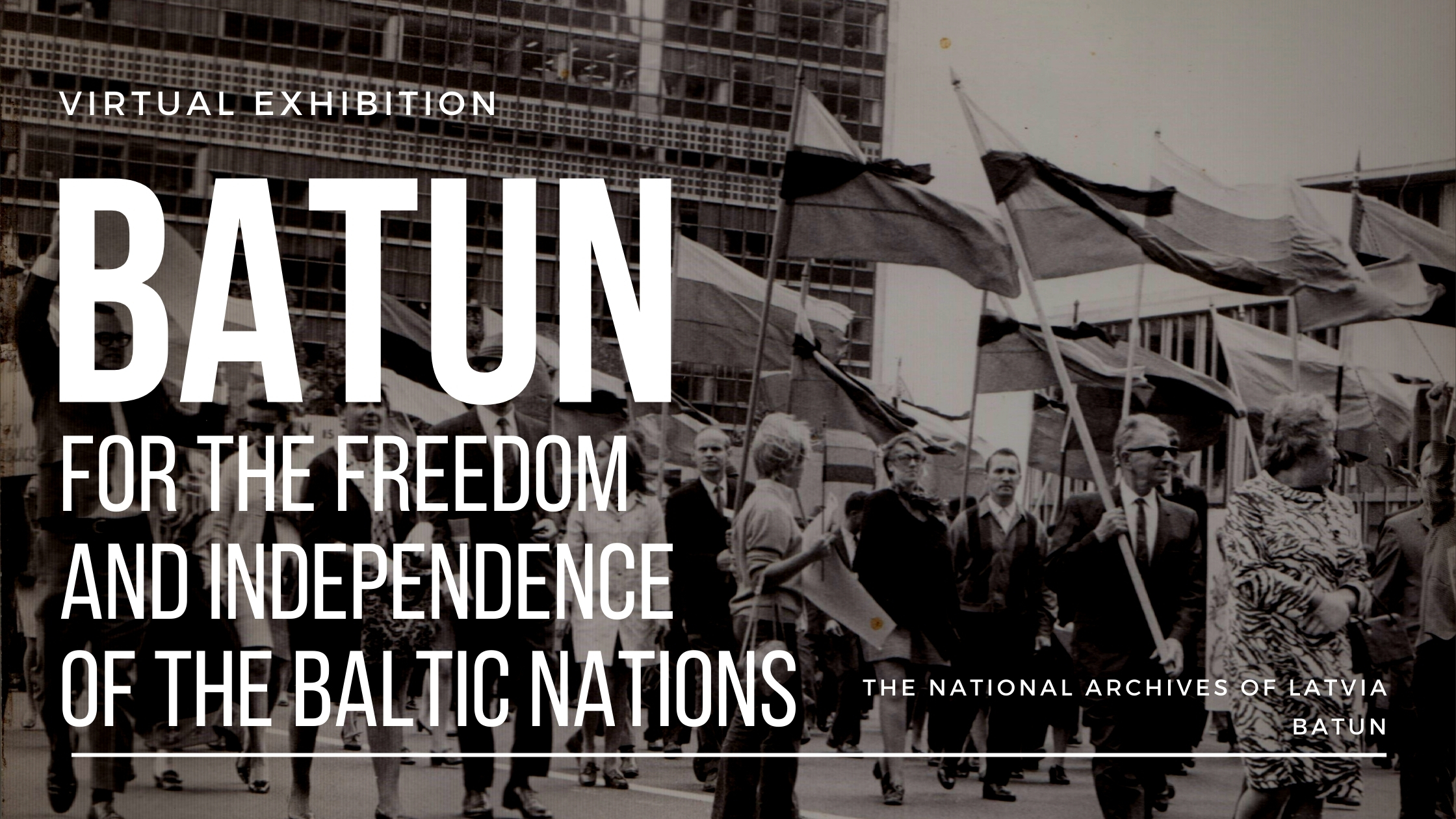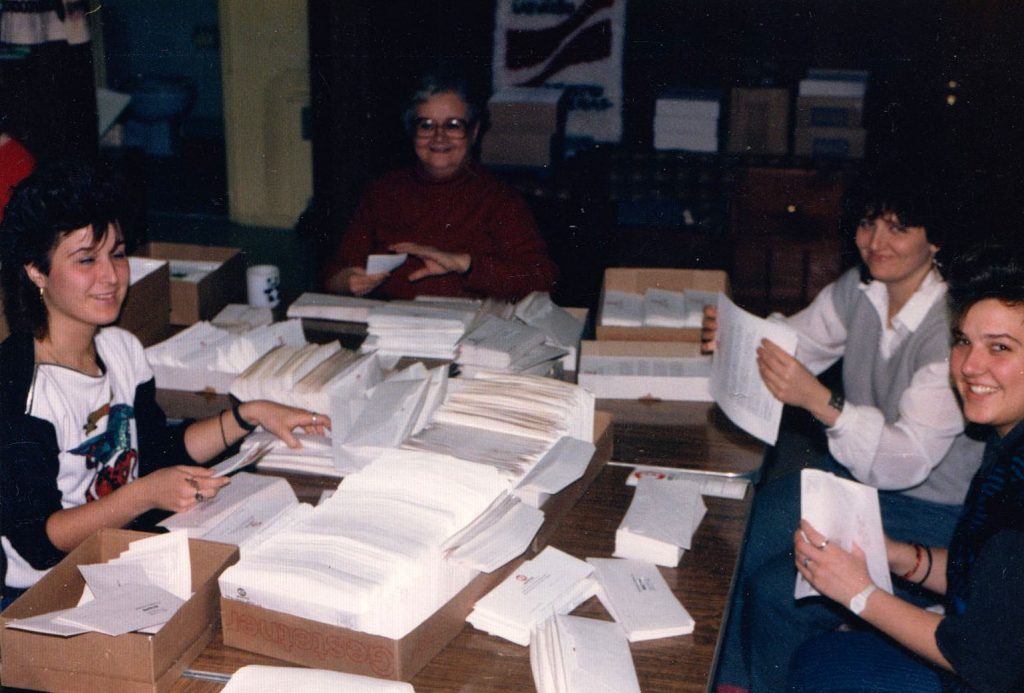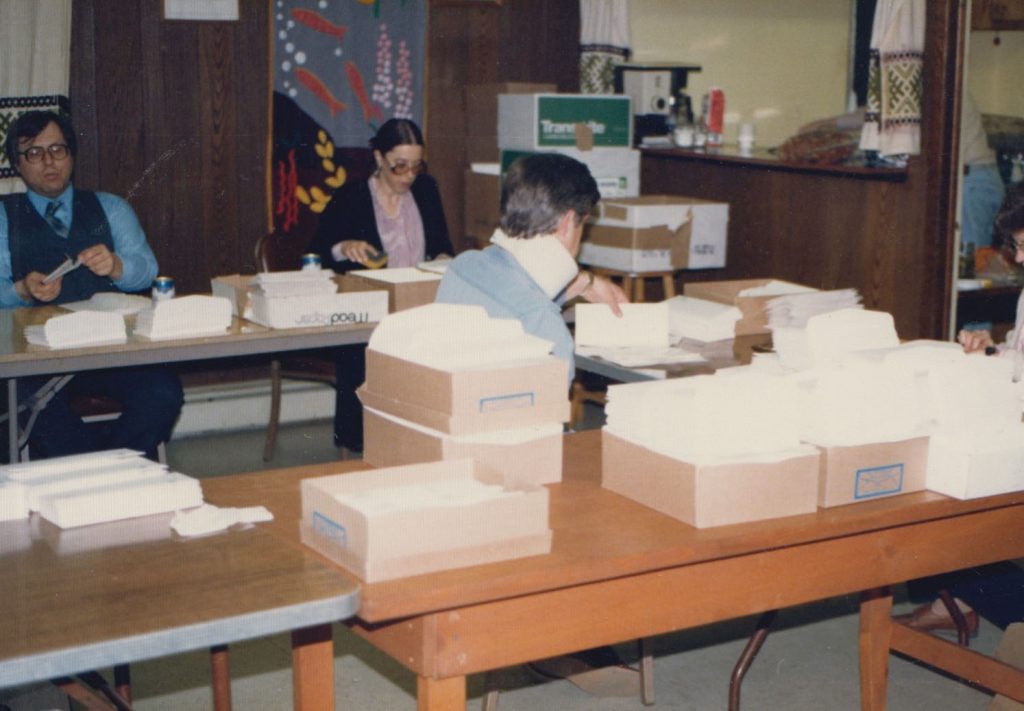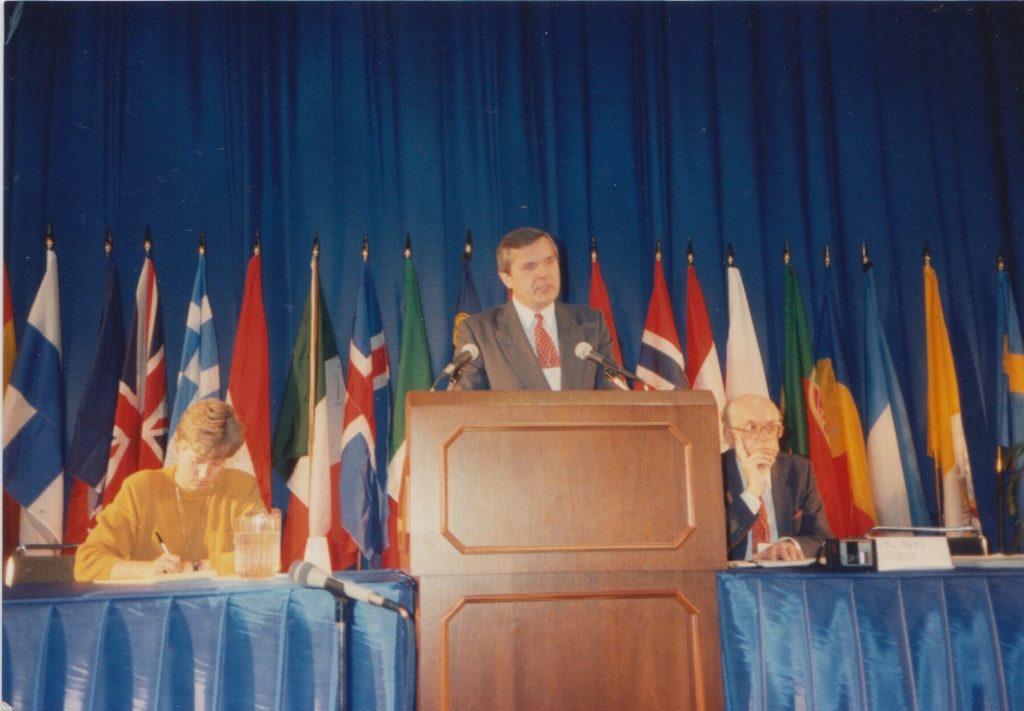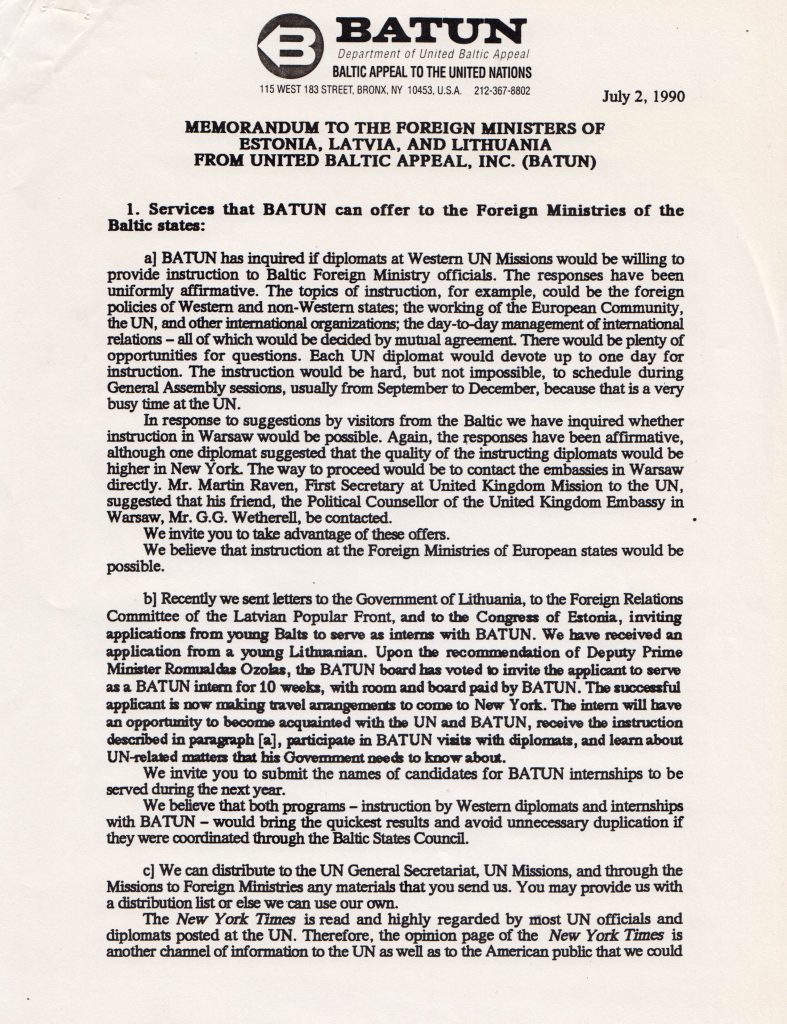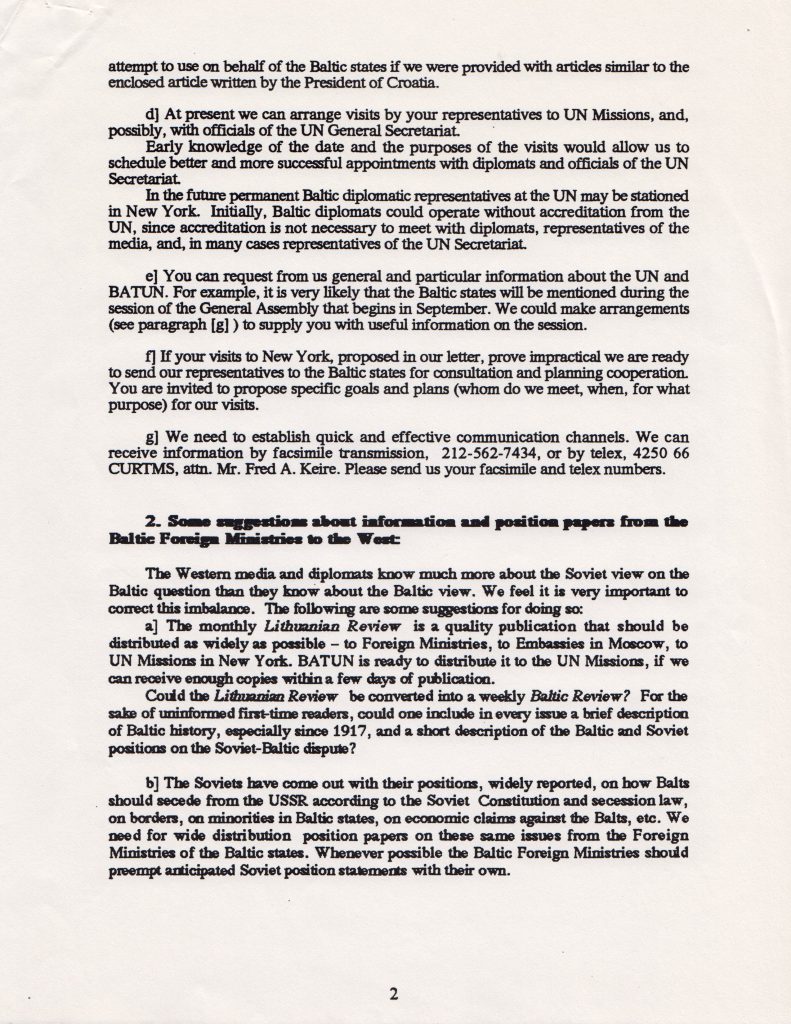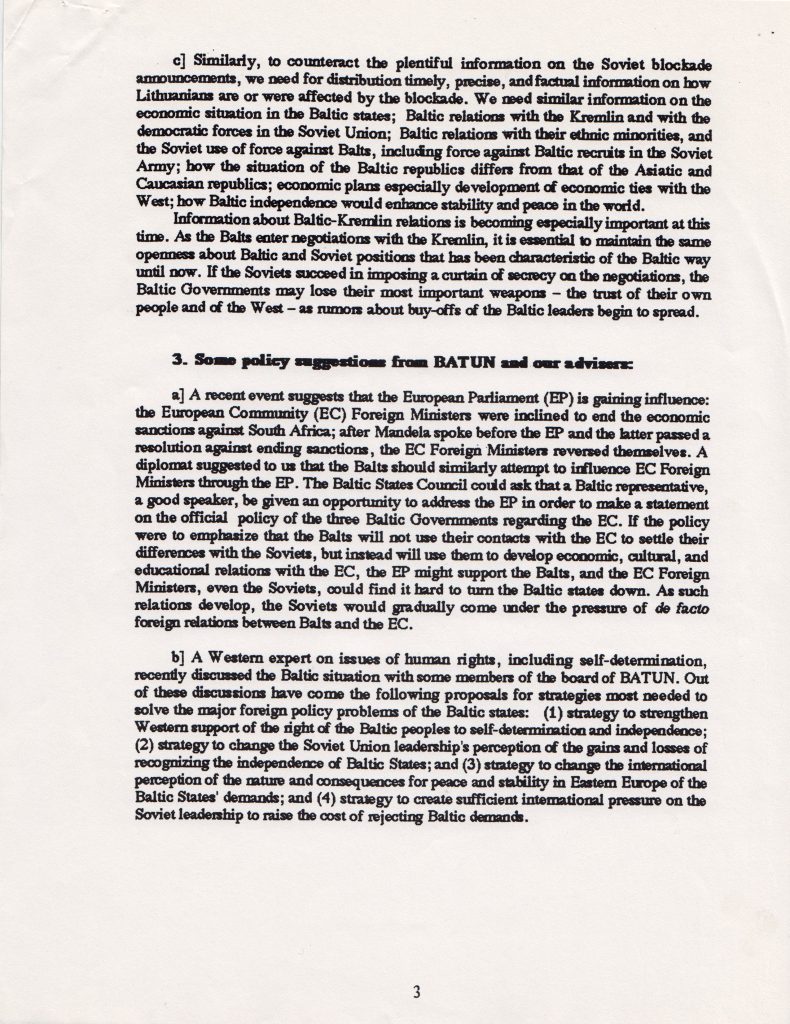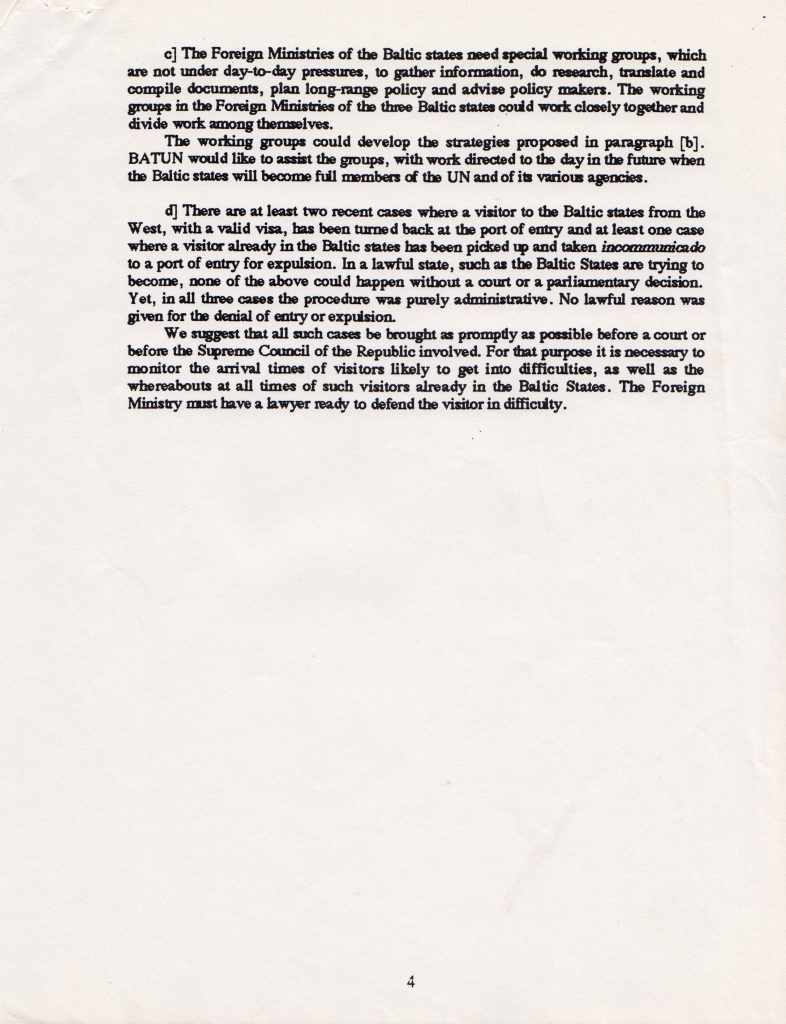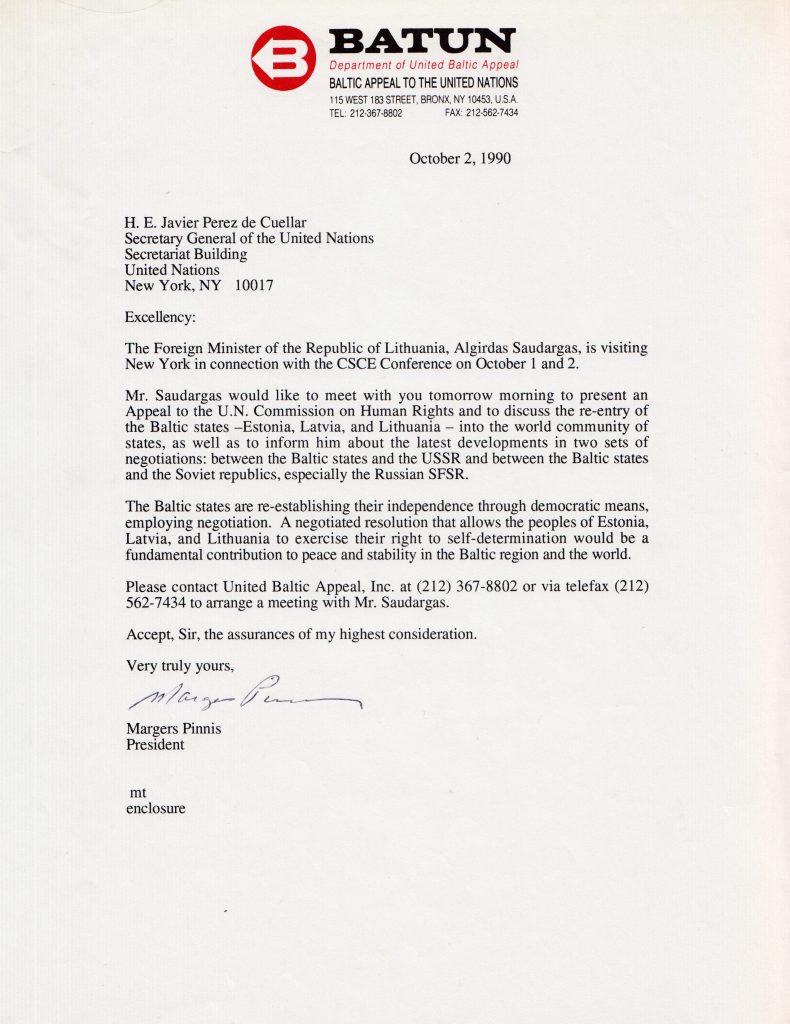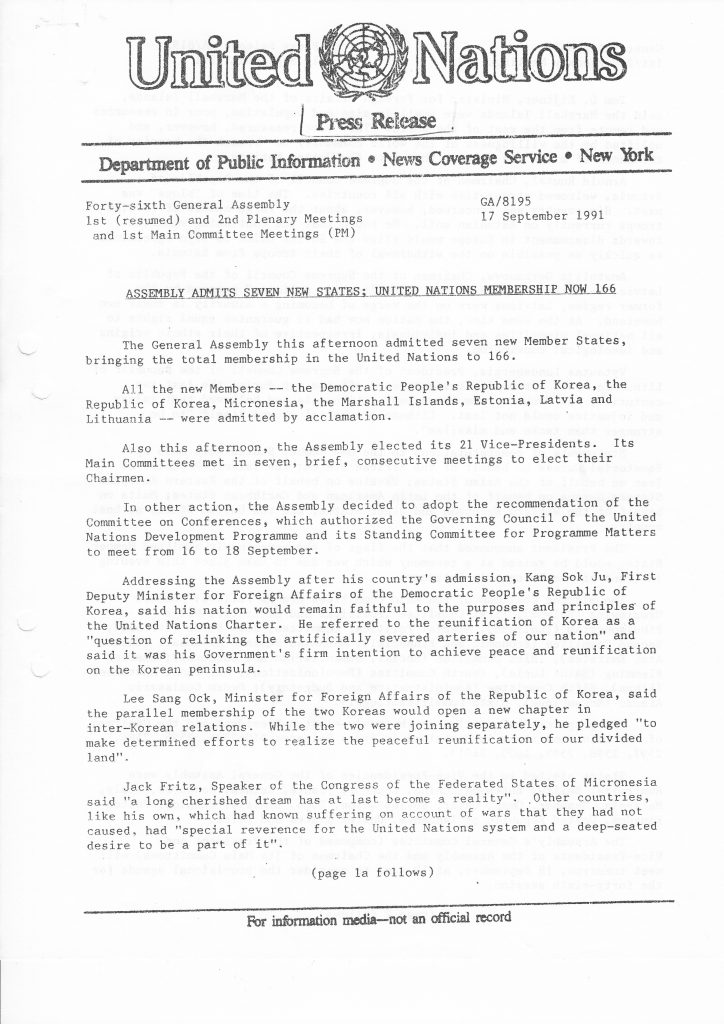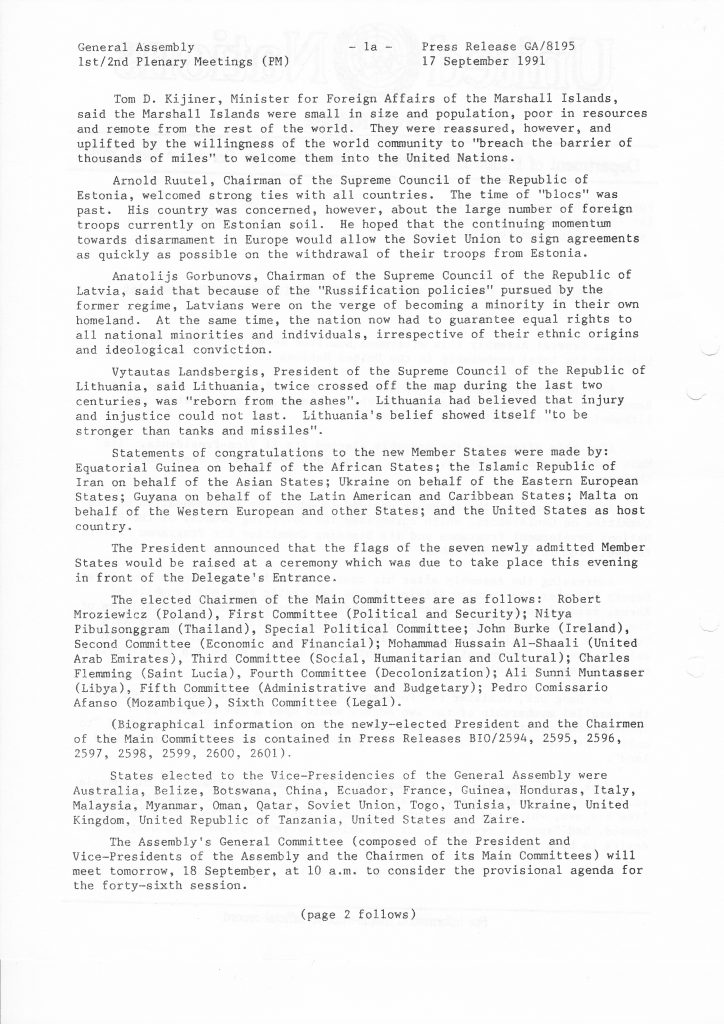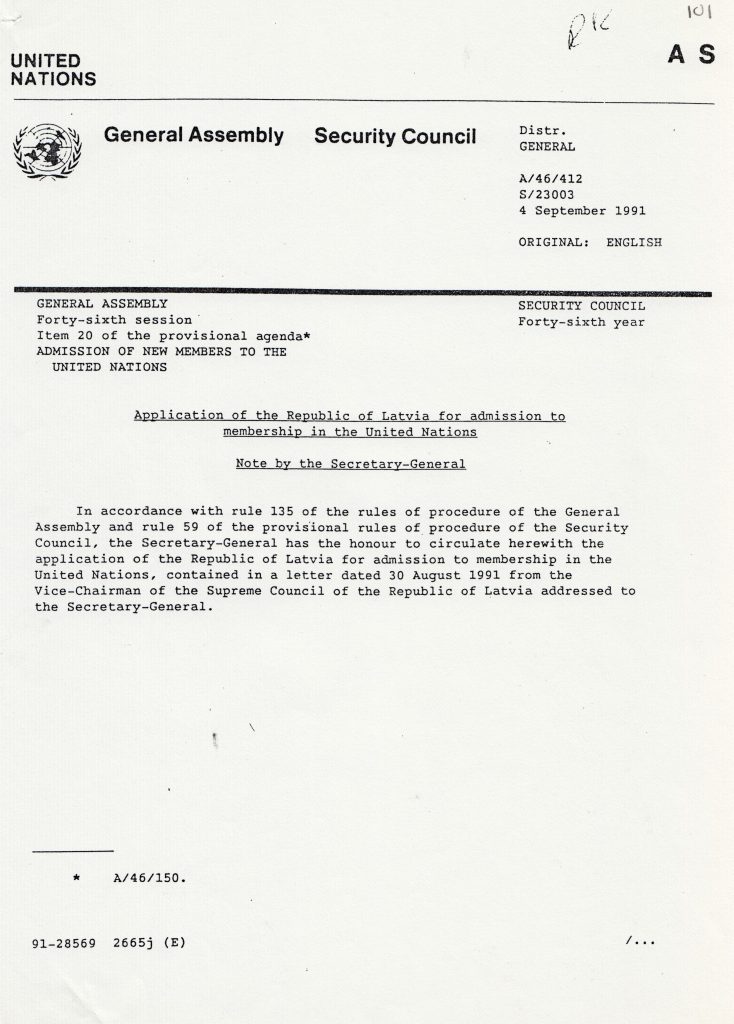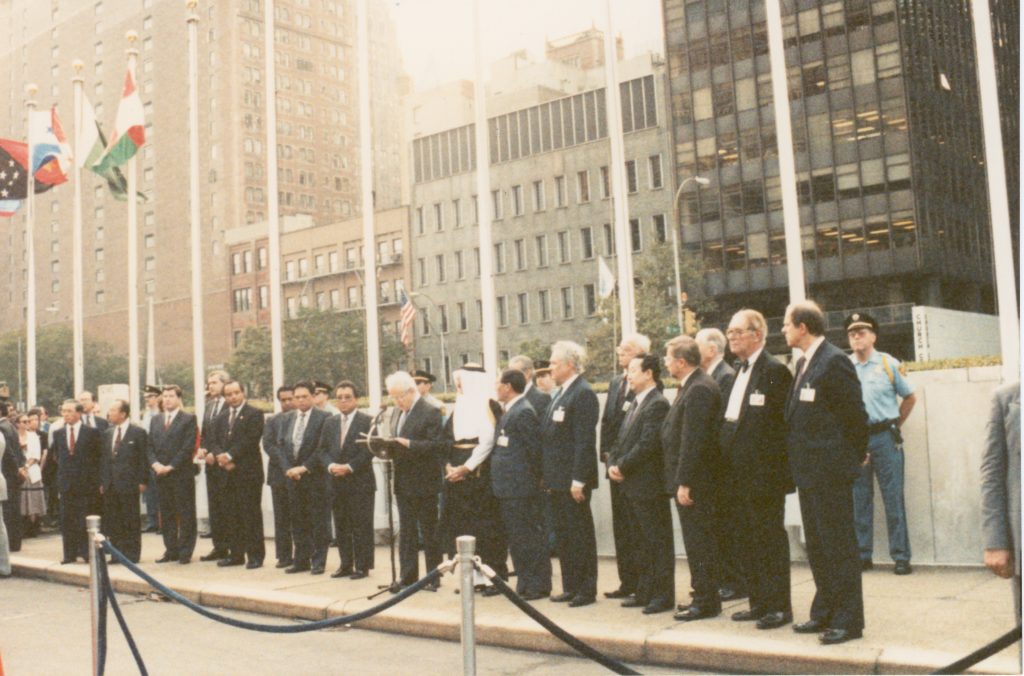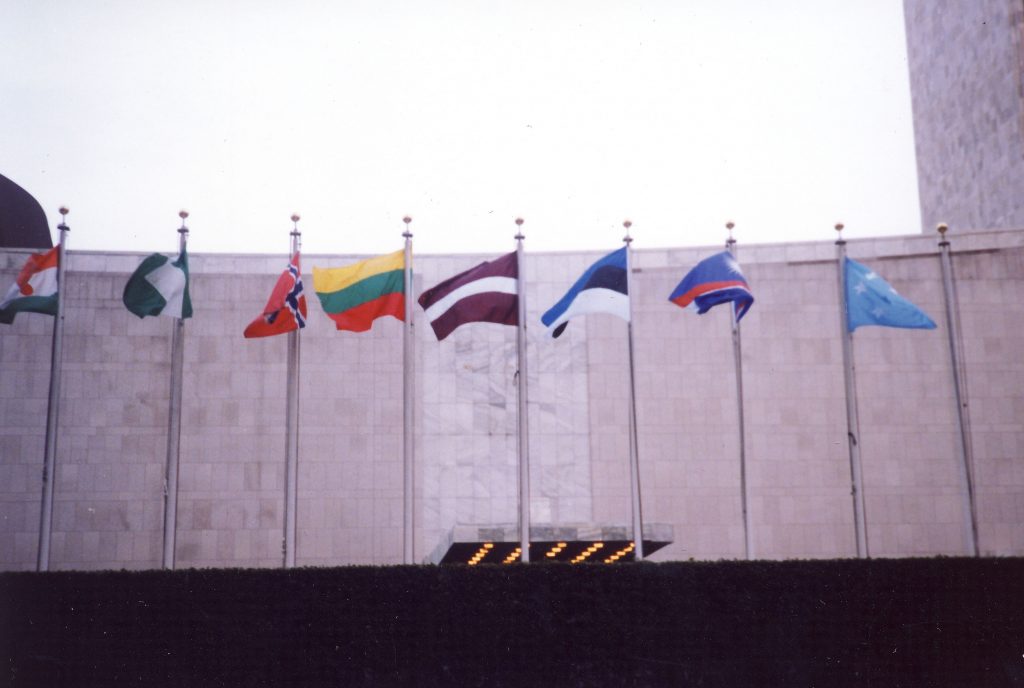February 1989 to August 1991 was a dynamic period when the Baltic exiles shared increasing hopes for the restoration of independence. The slow collapse of the Soviet from 1986 to 1989 was accompanied by the national awakening of the Baltic people. Perestroika, i.e., economic restructuring, which Gorbachev announced in April 1985, was on its way not only to creating a decentralized economic empire, but to breaking up the empire into independent units. The plans to reduce the Party’s control of the government apparatus, media, and Soviet society and to make changes to the Soviet Constitution would convert the USSR into a centralized presidential state. Gorbachev’s team suffered an important blind spot that caused Gorbachev’s intended direction of Soviet economic and social progress to be derailed and result in the unintended liquidation of the Soviet Union. At BATUN, these developments were seen as a means of opening a path for the restoration of Baltic independence. And this was the driving force for BATUN’s activities during this period. Before 1987, BATUN had few direct contacts with the homeland, except for the occasional exiled dissident. But after that, the main focus was the connection with the Baltic people.
During the perestroika era, various political movements were established in the occupied Baltic States. In 1986, three Latvian workers established the Helsinki ‘86 group to defend human rights in Latvia. In February 1987, an informal group in Riga, which had been active in the restoration of churches, established the Environment Protection Club (Vides aizsardzības klubs, VAK), a group initially interested in environmental protection. On June 14, 1987, a young, reformist Lutheran clergymen established Rebirth and Renewal (Atdzimšana un Atjaunošanās), a group to challenge and remove the Soviet restrictions on “leading a Christian life.” The Lithuanian Restructuring Movement– Lietuvos Persitvarkymo Sajūdis or just Sajūdis – was founded on June 3rd 1988. The Estonian Popular Front – Eestimaa Rahvarinne or RR – was formally founded on October 1st 1988. The founding of Latvia’s Popular Front – Latvijas Tautas Fronte, or LPF – followed on October 8. Among the many early legislative actions that the Popular Fronts and Sajūdis initiated, the most important were the declarations of sovereignty passed by the three Supreme Councils between November 1988 (Estonia) and July 1989 (Latvia). By early 1990, the goals of all three organizations had evolved to support of full independence. Beginning with the unprecedentedly free Soviet elections in early 1989 and ending with the restoration of full independence in August 1991, the three organizations functioned as political parties.
BATUN actively lobbied and provided information not only to the United Nations but also to many countries throughout Europe. BATUN assisted the Estonian People’s Front, the Latvian People’s Front, and Lithuania’s Sajūdis in presenting their programs and objectives to commissions at the United Nations and to various permanent missions and informing them of the aspirations of the people in the Baltic states to regain their independence. BATUN also gathered information from Western diplomats, as well as the global media, and transmitted this to the aspirations the Baltic foreign ministers. BATUN coordinated the visits of delegations from the Baltic countries to the missions of the UN Member States. An appeal presented under the auspices of BATUN, which was signed by Anatolijs Gorbunovs, Chairman of the Supreme Council of the Republic of Latvia, and addressed to governments and parliaments of the world, requesting that they recognize Latvia as an independent state and establish diplomatic relations.
BATUN’s in-person contacts with the representatives of the Baltic Popular Fronts began in April 1989, when delegation of the Latvian Popular Front (LPF) led by its Chairman Dainis Īvāns made a visit to the USA and Canada. The first meeting took place in New York on 21 April 1989 and was attended by three representatives of LPF, including its Chairman, and eleven BATUN activists. The contacts continued in July when Uldis Blukis from BATUN visited Latvia. He attended meetings of the Popular Front’s parliament (Dome) and the Latvian National Independence Movement (LNNK). He met with Jānis Freimanis and Jānis Jurkāns, the foreign relations leaders of the Popular Front, as well as with other human rights activists. BATUN also assisted in efforts to engage the UN human rights machinery for the protection of the Baltic victims of the Soviet military. Initially, in 1989, the focus was on the mistreatment of Baltic draftees in the Soviet military. Thereafter, BATUN turned its attention to the military’s attempts to catch Baltic deserters, the numbers of which had increased rapidly after March 1990.
Managing the flood of information
During this period, information started to flood out of the Baltic States. The news about Baltic events, the NGOs, and pro-independence governments grew rapidly, and at times of crises, the volume far exceeded that of the samizdat received during the previous two periods. In order to transmit all this information to UN Member States, BATUN started new publications and employed new technology. New volunteers expanded BATUN’s lobbying corps. In this climate of great hope for the restored independence of the Baltic States, the influx, of new exile activists (about five per year) was higher than at any other period.
Much of the news, and many of the documents came to BATUN directly from the local Baltic media, NGOs, and governments. As in earlier periods, BATUN received documents and news from other Baltic exile organizations. The importance of Western media grew, as their appetite for Baltic news kept increasing. The Baltic popular fronts authorized BATUN to promote their ideas and documents. BATUN packaged the information it received for delivery to the permanent missions to UN, to the members of the Commission on Human Rights and observers in Geneva, and, occasionally, to capitals of Western states. New technology allowed BATUN’s office to increase its productivity for receiving and transmitting large volumes of news and documents. From January 1991 on, the office could transmit or receive more than a thousand pages a day, i.e., transmit dozens of pages to each mission daily. Beginning in 1990, BATUN delegates perceived an increased interest in Baltic information among the Western diplomats at the UN. More references were made to the information provided by BATUN in the communications with their capitals. A diplomat of a small European country said that for his government, BATUN was its source of information on the Baltics. Requests were also made for more concise information. It was evident that the diplomats’ knowledge of and interest in the Baltic Question was increasing.
BATUN training for the new Baltic diplomats
BATUN’s knowledge about the complexities of the UN system and its experience gained in 25 years of lobbying are valuable resources for the Baltic peoples in their effort to gain international recognition and support.
BATUN actively sought lobbying and training opportunities for the representatives from the Baltic NGOs or governments. Beginning in the summer of 1989, some participated in lobbying visits and two BATUN interns came from Lithuania. Between February and early May 1990, after the Baltic States issued declarations reaffirming their independence, BATUN began seeking ways to help satisfy a new need – providing training for new Baltic diplomats. In 1989, the group held at least four meetings during the summer – on June 15 and 21, August 8, and September 15. The notes from the second meeting indicate that three topics were discussed: the training of delegates and board members; cooperation with groups in the Baltic States; and visits with diplomats in NY and Geneva. By February 1990, eleven leaders had participated in at least forty visits to the missions of Western countries or the UN Secretariat with the assistance of BATUN.
In early September 1990, the BATUN board of directors discussed a new project involving the training of Baltic diplomats at BATUN for the first time. The project was based in part on an extended series of discussions about diplomatic training that began in August 1990 with the Director of Training and Research of UNITAR (UN Institute for Training and Research). During his BATUN internship from July 23 to October 4,1990, Haroldas Subacius from Vilnius, who was nominated by the government of Lithuania in response to an invitation by BATUN, made twelve visits to the permanent mission of eleven different European countries. During meetings with Lennart Meri, the Foreign Minister of Estonia and Jānis Jurkāns, the Foreign Minister of Latvia in late September and early October, a tentative plan was developed for BATUN to train the representatives of the Supreme Councils of the Baltic States who would join the Baltic Consulates in NY. By mid-1990, cooperation became more focused on the new Baltic governments and the UN became less of a priority for BATUN. Instead, the plans became focused on assisting the Baltic officials, mostly the foreign ministers, in their relations with Western countries and on training Baltic diplomats. By late August 1991, BATUN was helping the Baltic States prepare for admission to the UN.
BATUN lobbying
The BATUN mission to Geneva in February 1990 was a major lobbying project that was decided unusually early in August 1989. A reason for the lobbying was the decision to include, for the first time ever, “three people from the occupied Baltic” in the six-person BATUN delegation. The board approved the candidate from Latvia and authorized the Estonians and Lithuanians to select their representatives. By late December, the preliminary members of the delegation included: BATUN board members Urmas Wompa and Ann Charles; Jānis Freimanis, chair of the Foreign Relations Committee of LPF, from Latvia who replaced the original candidate – Jānis Jurkāns. BATUN informed the permanent missions about the expected declarations, beginning with the Lithuanian one on March 11, 1990. During the months following the declarations of independence – May to early October 1990 – BATUN continued its previous activity and initiated two new ones. The previous activity was lobbying for the UN permanent missions to make statements on the Baltic Question during the general debate of the 45th session of the UN General Assembly. The two new ones were establishing relations and making plans with the FMs of the Baltic States during meetings in July and September/October and making appointments for the Baltic Foreign Ministrie’s with high-level officials of UN Member States. In the second half of August and first half of September 1990 BATUN made upwards of a dozen visits to the permanent missions of Western, mostly EC, countries in NY. Most, possibly all countries visited were asked to make a statement on the Baltic Question in General Assembly’s general debate.
Collaboration with Baltic governments and foreign ministries
BATUN’s cooperation with the Baltic foreign ministries first culminated in the second half of July 1990 when BATUN met with each of the Baltic foreign ministers. During these meetings “many ideas were discussed and tentative plans were made.” BATUN also learned that the UN was not a primary concern to the Baltic foreign ministries and that they had a severe shortage of people with knowledge of foreign languages and foreign affairs.
The two meetings lasted for a total of more than three hours and most of the time was devoted to planning. The planning objectives focused on the future relationship of BATUN and the Baltic governments in three areas. These areas included:
- BATUN functioning as an unofficial embassy representing the Supreme Councils of the Republic of Estonia, the Republic of Latvia an the Republic of Lithuania at the UN. Each of the foreign ministries would send a representative/student to BATUN for a three-month internship. Besides representing his country, he/she would also assist in BATUN’s work.
- BATUN would help to arrange short-term (3-6 months) diplomatic training for young Baltic diplomats with UNITAR in New York or Europe.
- Improving the technical aspects of communication between BATUN and the Baltic foreign ministries.
Another activity undertaken by BATUN during the visit of the Baltic foreign ministers to New York was to set up some meetings between the ministers and high-level diplomats. BATUN helped arrange fourteen meetings, most of which were with European foreign ministers and ambassadors.
On August 1991, BATUN began to focus on the admission of the Baltic states to the UN. On August 28th, the New York Times wrote that the European Community had recognized the Baltic States and was looking forward to their imminent admission to the UN. And BATUN heard that the UN diplomats were talking about the admission as well. On September 17th BATUN activists attended the General Assembly meeting as guests of the Baltic foreign ministers. After the meeting ended, the Baltic flags were raised in front of the UN building. In the evening of September 18th, BATUN organized a reception for the Baltic heads of state.
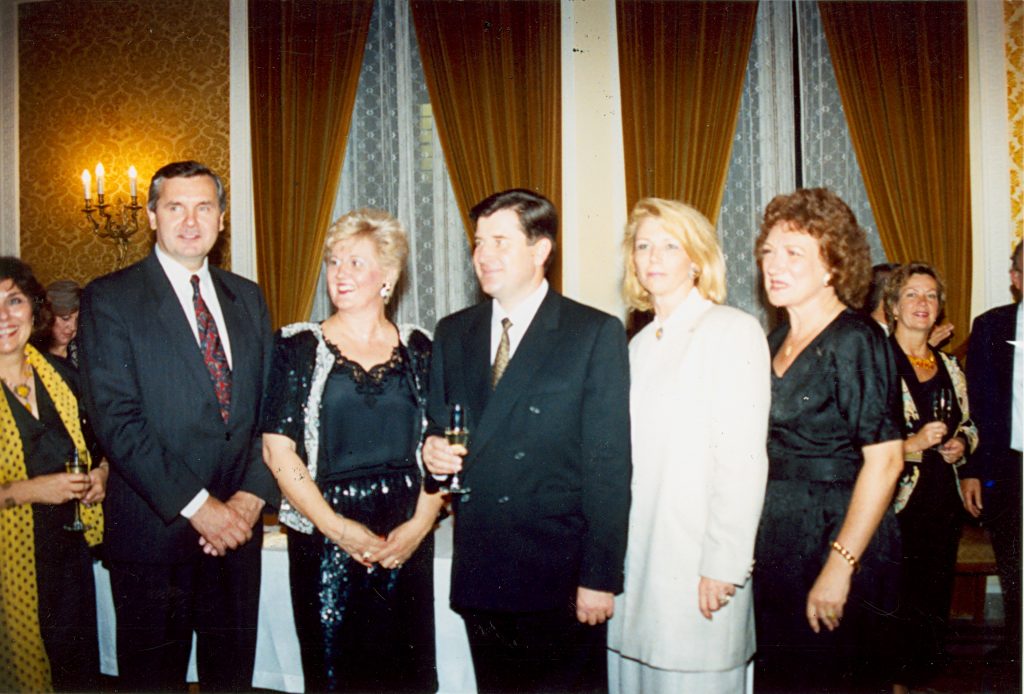
After the admission of the Baltic States to the UN
After 1991, BATUN had to make some decisions about its future. And these issues were debated at two board meetings in September and October of that year. One question was related to the fact that the Baltic foreign ministries had offered diplomatic posts at their permanent missions in New York to some BATUN activists. The question was the future status of the following eight BATUN activists: its office manager (Mara Treimanis, Latvian); four current members (Heino Ainso, Paul Luedig, Urmas Wompa (Estonians) and Uldis Blukis, (Latvian)); Algimantas Petras Gureckas, one of BATUN’s founders and a board alternate in 1967-8 and two former board members Marģers Pinnis, (Latvian) and Ginte Damusis, (Lithuanian))–who had accepted positions at the Baltic permanent missions to the UN. Five of them assumed fulltime positions. The BATUN office manager resigned from her position. While most of the BATUN activists ended their diplomatic careers before 2000, there were exceptions among the younger BATUN activists. Three of them became permanent diplomats. One was Ginte Damusis, a former board member or alternate (1980-1987) who was a member of the Permanent Mission of Lithuania to the United Nations until 1996, and has served as the Head of Mission of the Republic of Lithuania to the North Atlantic Treaty Organization as well as the Ambassador of Lithuania in several European countries. The other was Imants Gross, the former European Director of BATUN (1984-6). He was the first Ambassador of re-independent Latvia to Sweden. In 2006, he became the director of the Nordic Council of Ministers’ Office in Latvia. A multi-year BATUN delegate to the UNCHR sessions in Geneva, Narcizas Prielaida, became the first Permanent Representative, (with the rank of Ambassador), of Lithuania to the UN in Geneva.
Between 1995 and 2000, several BATUN actions took place:
- Response to Russia’s defamation campaign against the Baltic states – firstly, collecting articles in the western press where were false or unfavorable news about the Baltic States to answer with the facts. Secondly, working on public relations to strengthen the reputation of Estonia, Latvia and Lithuania abroad.
- The publication of the Baltic Chronology, Geneva memoranda, occasional production of supporting documents for distribution in Geneva, and articles for various publications involving the Baltic countries.
- Support for the activity of the UN Associations of Estonia, Latvia and Lithuania;
- The sponsorship of various cultural events and lectures in New York.
